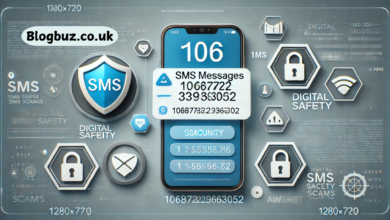Mirror Folder 42GB: Synchronizing and Backing Up Large Data Sets

Managing large volumes of data is a common challenge in today’s digital world. Whether for personal or professional use, ensuring the security and accessibility of data is critical. One effective way to achieve this is by mirroring a folder—creating an exact, synchronized copy of its contents. This guide focuses on mirroring a 42GB folder, offering tools, techniques, and tips for efficient and secure data management.
What Does It Mean to Mirror a Folder?
Mirroring a folder involves duplicating its contents to another location, ensuring both folders remain identical. Changes made in the original folder, such as additions, deletions, or modifications, are reflected in the mirrored folder. This practice is beneficial for:
- Data Backup: Protecting against accidental data loss or corruption.
- File Synchronization: Ensuring consistency across devices or users.
- Collaboration: Allowing teams to work with the latest versions of shared files.
Mirroring a large folder, such as one containing 42GB of data, requires careful planning and the tools to manage time, storage, and security effectively.
Benefits of Mirroring a 42GB Folder
- Data Redundancy: A duplicate of your folder ensures that your data is not lost in case of hardware failure or accidental deletion.
- Cross-Device Synchronization: Access your files seamlessly across multiple devices.
- Disaster Recovery: Minimize downtime by maintaining an up-to-date copy of essential files.
- Efficient Collaboration: Share mirrored folders with team members to ensure everyone works on the most current files.
Tools for Mirroring a Large Folder
Various tools and software solutions are available to mirror a folder of 42GB effectively. Here are some of the best options:
Robocopy (Windows)
Robocopy is a command-line tool that comes pre-installed on Windows systems. It is known for its reliability and efficiency and can easily handle large datasets. Use the /MIR flag to create a mirror of your folder.
Example Command:
robocopy “C:\SourceFolder” “D:\DestinationFolder” /MIR
SyncToy (Windows)
SyncToy, a free utility from Microsoft, offers an intuitive interface for synchronizing files and folders. Its “Echo” feature is ideal for mirroring purposes.
rsync (Linux and macOS)
Rsync is a powerful command-line utility for efficiently synchronizing and mirroring directories. It supports incremental updates, which means only modified files are copied after the initial sync.
Example Command:
Rsync -av –delete /source/folder/ /destination/folder/
MirrorFolder (Windows)
MirrorFolder is a specialized tool for real-time folder mirroring and synchronization. It’s beneficial for large folders, such as a 42GB dataset.
Cloud Storage Services
Platforms like Google Drive, Dropbox, and Microsoft OneDrive provide folder synchronization features. These tools are excellent for creating a mirrored copy of your folder in the cloud, offering remote access and additional backup.
How to Mirror a 42GB Folder Effectively
- Assess Storage Requirements: Ensure the destination location has enough space to accommodate your folder. For a 42GB folder, consider additional space for future growth.
- Select the Right Tool: Choose a tool based on your operating system and specific needs (e.g., real-time updates, cloud backup).
- Plan the Initial Sync: The first synchronization may take time, especially using a network or cloud storage.
- Enable Incremental Updates: After the initial mirroring, opt for incremental synchronization to save time and bandwidth.
- Test the Mirror: Verify the mirrored folder to ensure all files are correctly copied and accessible.
Challenges of Mirroring Large Folders
- Time Consumption: Mirroring 42GB of data can take considerable time during the initial sync.
- Bandwidth Usage: Uploading or downloading large folders to/from the cloud may consume significant bandwidth.
- Data Security: Sensitive data requires encryption to prevent unauthorized access.
- Hardware Limitations: Ensure your storage devices and systems can handle large file transfers without errors.
Tips for Efficient Mirroring of a 42GB Folder
- Use High-Speed Connections: Opt for USB 3.0, Thunderbolt, or high-speed network connections to speed up data transfer.
- Compress Files: Reduce file sizes before mirroring if possible.
- Schedule Synchronization: Perform mirroring during off-peak hours to avoid system slowdowns.
- Enable File Versioning: Some tools allow version control, which helps recover previous versions of files.
- Monitor Disk Health: Regularly examine the health of your storage devices to prevent data loss.
Everyday Use Cases for Mirroring a 42GB Folder
- Photography and Media Professionals: Safeguard large photo and video libraries.
- Software Developers: Maintain synchronized copies of code repositories and project files.
- Businesses: Back up important documents and client data.
- Students and Academics: Secure research data and educational materials.
Frequently Asked Questions
How long does it take to mirror a 42GB folder?
The time required depends on factors like the speed of your connection (USB, network, etc.) and the performance of your storage devices. High-speed options can complete the task within an hour, while slower connections may take longer.
Can I mirror a folder to an external drive?
Yes, external drives are a common destination for mirrored folders. Ensure the drive has sufficient storage and is formatted correctly for your operating system.
Is cloud storage a good option for large folders?
Yes, cloud storage provides accessibility and redundancy. However, upload speeds and subscription costs must be considered.
How do I secure my mirrored folder?
Encrypt critical data during transfer and at rest. Many tools and cloud platforms offer built-in encryption options.
Conclusion
Mirroring a 42GB folder may seem daunting, but it’s a manageable task with the right tools and approach. Whether backing up essential files, synchronizing devices, or collaborating with a team, folder mirroring ensures your data is secure, accessible, and up-to-date. By following the tips and recommendations in this guide, you can confidently mirror even the largest folders with efficiency and peace of mind.
You May Also Read: Troubleshooting Tumblr FE Problems 2024: Common Problems and Solutions




